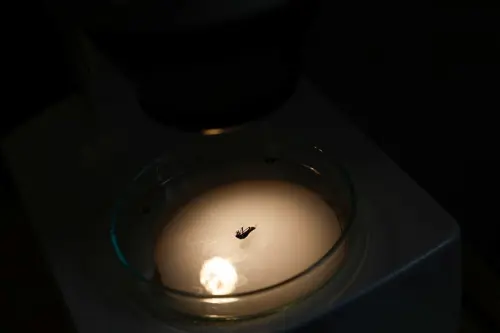Chile's Patagonian Ice Dragon is a remarkable insect that spends its entire life in freezing glaciers, feeding on algae and bacteria. This wingless, finger-shaped black insect, measuring just 15 millimeters (0.6 inches) with long antennae, is one of the few creatures capable of surviving such extreme conditions. However, it is now classified as an endangered species due to the accelerating loss of glaciers caused by global warming.
Maribet Gamboa, a researcher at UCSC, is leading a study focused on preserving the Patagonian Ice Dragon and the glaciers it inhabits. The research aims to deepen the understanding of the glacier ecosystem and the unique adaptations of the Patagonian Ice Dragon. Scientists have collected samples to investigate the genetic adaptations that enable this insect to thrive in its harsh environment.
First discovered in the 1950s, the Patagonian Ice Dragon was thought to be extinct until its rediscovery during an expedition in 2001. This resilient insect can survive at depths of up to 40 meters and serves as an indicator of clean glacial waters, acting as a natural filter by feeding on organic matter, dust, and bacteria.
Gamboa believes that studying the Patagonian Ice Dragon will provide insights into glacier health in a warming world. This research combines an examination of the insect with an investigation of how climate change is impacting glaciers and their habitats, positioning the Patagonian Ice Dragon as a sentinel for climate change in the region.
